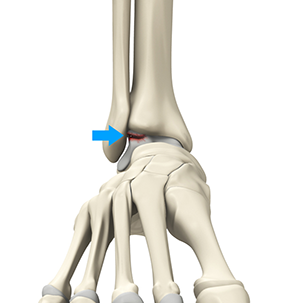Microfracture is a specialized surgical technique used to treat osteochondritis dissecans (OCD) lesions in the ankle joint. OCD lesions occur when a portion of the cartilage and underlying bone becomes damaged or separates from the joint surface. This procedure aims to stimulate the body's natural healing response, promoting the formation of new cartilage and facilitating the restoration of joint function.


Understanding OCD Lesions in the Ankle:
Osteochondritis dissecans commonly affects the joints, including the ankle, and can result from repetitive stress, trauma, or sometimes due to unknown causes. These lesions can cause pain, swelling, and limited joint mobility, impacting an individual's ability to move comfortably.

Microfracture Procedure:
Microfracture involves the creation of small, shallow holes or channels within the damaged area of the joint surface. These microfractures stimulate blood flow to the area, encouraging the development of new blood vessels and the release of healing factors. These factors promote the formation of a specialized tissue called fibrocartilage, which fills in the defect left by the OCD lesion.

The Procedure:
The microfracture procedure is typically performed under anesthesia, and it involves the following steps:
Preparation: The patient is positioned comfortably, and the ankle joint is prepared for surgery.
Microfracture: Using specialized instruments, the surgeon creates a series of tiny holes or channels in the damaged cartilage and underlying bone.
Healing Process: Blood from the microfractures fills the lesion, providing a scaffold for fibrocartilage to develop and gradually cover the damaged area.
Recovery and Rehabilitation: After surgery, the ankle is protected and immobilized to allow for healing. A carefully designed rehabilitation program follows, involving progressive weight-bearing, range of motion exercises, and physical therapy.
Benefits and Considerations:
Microfracture for OCD lesions of the ankle aims to alleviate pain, improve joint function, and delay or prevent the progression of arthritis. It is particularly suitable for smaller lesions that have a higher likelihood of responding to the healing process stimulated by the procedure.
Recovery and Long-Term Outcome:
Recovery following microfracture involves a combination of rest, protection, and rehabilitation. While microfracture stimulates cartilage healing, it's important to note that the new tissue may not be as durable as the original cartilage. Therefore, carefully adhering to the rehabilitation plan and avoiding excessive impact on the joint are essential for long-term success.
Patient Selection:
The success of microfracture largely depends on patient selection. Ideal candidates for this procedure are generally younger individuals with smaller OCD lesions and healthy surrounding joint tissues.
In conclusion, microfracture for OCD lesions of the ankle is a technique aimed at promoting healing and restoring joint function. By encouraging the growth of new fibrocartilage, this procedure provides a valuable option for individuals seeking relief from pain and improved ankle mobility. If you are considering microfracture for an OCD lesion in your ankle, consult Dr. Fahad to determine the most suitable treatment plan for your specific condition.


